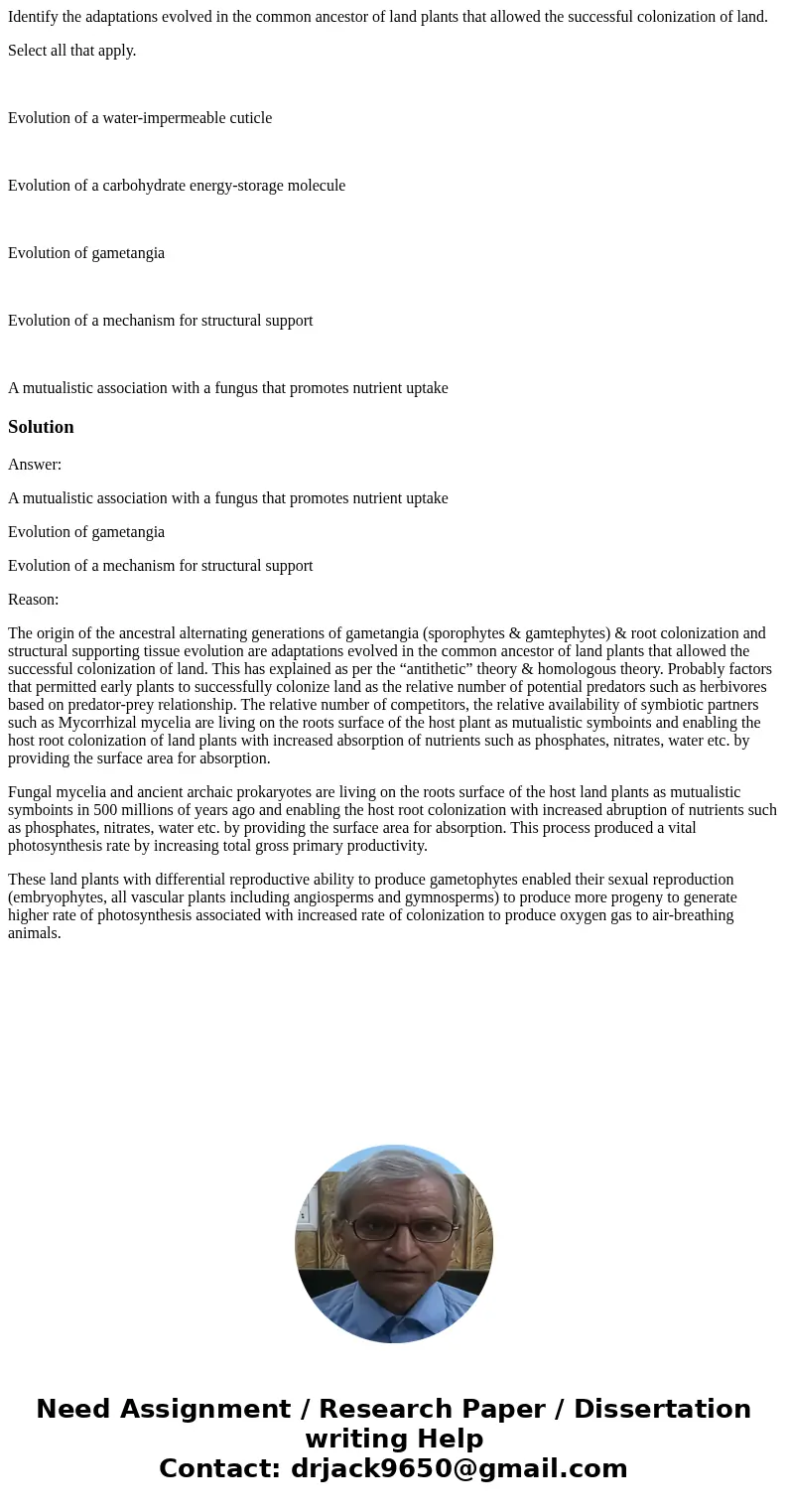Identify the adaptations evolved in the common ancestor of l
Identify the adaptations evolved in the common ancestor of land plants that allowed the successful colonization of land.
Select all that apply.
Evolution of a water-impermeable cuticle
Evolution of a carbohydrate energy-storage molecule
Evolution of gametangia
Evolution of a mechanism for structural support
A mutualistic association with a fungus that promotes nutrient uptake
Solution
Answer:
A mutualistic association with a fungus that promotes nutrient uptake
Evolution of gametangia
Evolution of a mechanism for structural support
Reason:
The origin of the ancestral alternating generations of gametangia (sporophytes & gamtephytes) & root colonization and structural supporting tissue evolution are adaptations evolved in the common ancestor of land plants that allowed the successful colonization of land. This has explained as per the “antithetic” theory & homologous theory. Probably factors that permitted early plants to successfully colonize land as the relative number of potential predators such as herbivores based on predator-prey relationship. The relative number of competitors, the relative availability of symbiotic partners such as Mycorrhizal mycelia are living on the roots surface of the host plant as mutualistic symboints and enabling the host root colonization of land plants with increased absorption of nutrients such as phosphates, nitrates, water etc. by providing the surface area for absorption.
Fungal mycelia and ancient archaic prokaryotes are living on the roots surface of the host land plants as mutualistic symboints in 500 millions of years ago and enabling the host root colonization with increased abruption of nutrients such as phosphates, nitrates, water etc. by providing the surface area for absorption. This process produced a vital photosynthesis rate by increasing total gross primary productivity.
These land plants with differential reproductive ability to produce gametophytes enabled their sexual reproduction (embryophytes, all vascular plants including angiosperms and gymnosperms) to produce more progeny to generate higher rate of photosynthesis associated with increased rate of colonization to produce oxygen gas to air-breathing animals.

 Homework Sourse
Homework Sourse